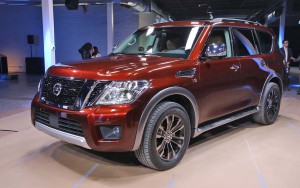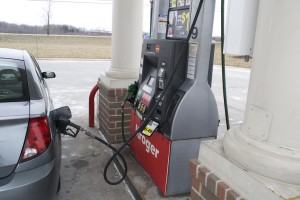
Consumers preferences for large SUVs continues to take its toll on the national fuel economy average.
The average fuel economy or window-sticker figures of new vehicles sold in the U.S. in August was 25.3 mpg — down 0.1 miles per gallon from July as consumers continued to prefer trucks and utility vehicles over traditional passenger cars, according to the monthly survey by the University of Michigan Transportation Research Institute.
The value for August is up 5.2 mpg since October 2007, the first month of UMTRI’s monitoring, but still down 0.2 mpg from the peak of 25.5 mpg reached in August 2014, U-M researchers Michael Sivak and Brandon Schoettle
University of Michigan’s separate Eco-Driving Index or EDI, which presents an estimate of the average monthly emissions of greenhouse gases generated by an individual U.S. driver, worsened to 0.83 in June 2017, up from 0.82 in May 2017.
The lower the value, the better and the current EDI indicates that the average new-vehicle driver produced 17% lower emissions in June 2017 than in October 2007, but 5% higher emissions than the record low reached in November 2013 just as the shift in consumer preference from cars to truck and utility vehicles was taking old.
(New vehicle fuel-economy averages improve in July. For the story, Click Here.)
Meanwhile, the Trump administration is seeking comments on whether to loosen the fuel-economy standards rather than retaining the Obama administration’s tighter rules, which call for raising the average of fuel-economy of each automakers’ total fleet reaches 50 mpg by the 2025. Individual vehicle segments, such as truck and utility vehicles would have lower standards.
Automakers complained that the Obama administration failed to allow for a mid-term technical review that would allow automakers and outside experts to offer testimony on whether the 50-mpg rule was feasible.
As currently written, the rules have pushed carmakers to offer more batter-electric and plug-in hybrid vehicles, which can easily meet the 2025 requirement. Environmentalist have countered the efforts of the Trump administration to loosen the fuel economy standards.
“Another evaluation of the successful clean car program is a political ploy and a waste of taxpayer resources,” noted Rhea Suh, president of the Natural Resources Defense Council.
(Click Here for more about GM and Ford sales in China.)
“President Trump’s push to roll back these standards is deeply unpopular with Americans. That’s because the standards are saving drivers money at the pump, creating good paying jobs, and cutting pollution in our communities,” she said.
Suh added before a hearing this week that any “honest review” of the program that’s based on science will reaffirm that the standards are achievable and should remain in place.
Meanwhile, Hurricane Harvey has pushed gasoline prices in the U.S. to their highest level in two years. AAA also said this week gasoline prices have probably been unusually low for the past two years.
(To see more about the 20 models disappearing in 2018, Click Here.)
However, it is too soon to say whether the surge in fuel prices, coupled with sight of gas lines and shuttered fuel pumps in Florida as Hurricane Irma approached U.S. shores, will have an impact on consumer behavior.

